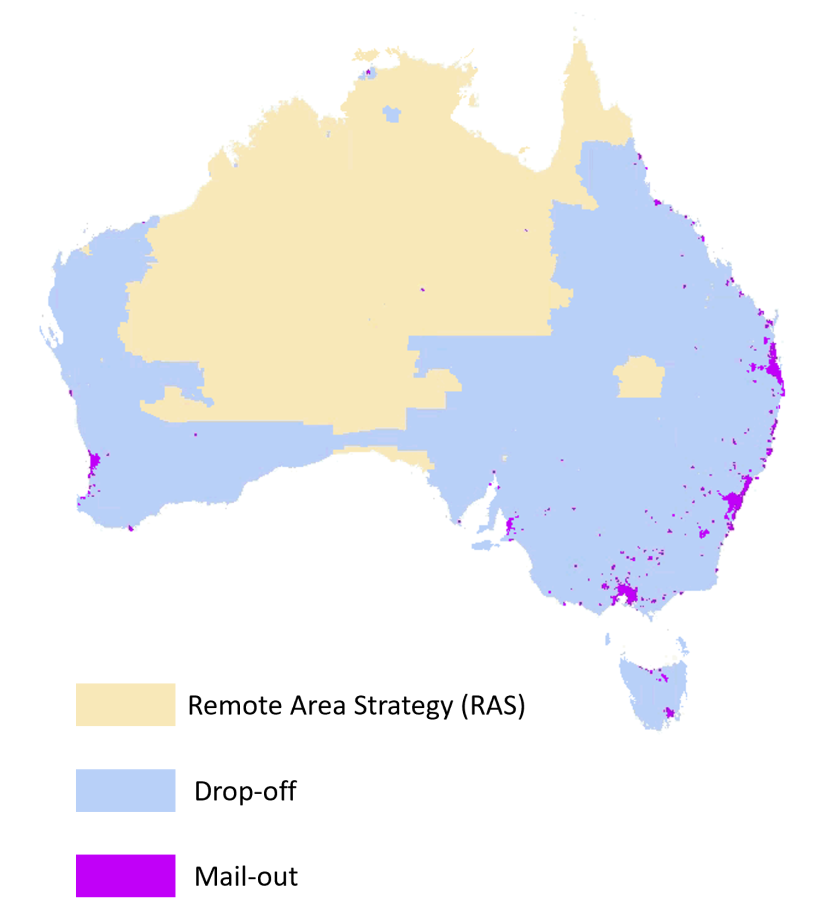About the Census
Scope of the Census
The ABS conducts the Australian Census of Population and Housing every five years. It provides a snapshot of who we are on Census day and shows us how we are changing over time. It counts every person and home in Australia and is the only source of information about small geographic areas and small population groups across the whole country.
The information we collect in the Census helps estimate Australia's population, which is then used to:
- set electoral boundaries
- determine the number of seats in the Australian House of Representatives allocated to each state and territory
- calculate how government funds are distributed
- inform planning for services and infrastructure.
Governments, local councils, academic institutions, and community groups use Census data to help inform important decisions about planning for:
- schools
- health care facilities
- transport
- local services.
The Census is compulsory for everyone in Australia, except diplomats and their families. This includes people in Norfolk Island, the Territories of Cocos (Keeling) Islands and Christmas Island. It also includes international visitors and students.
Data collection
For the 2016 Census, we changed the Census collection model to work on an address list basis. Before 2016, field staff were required to find all the dwellings in an area. However, as our national residential address lists are accurate and detailed, we knew we could trust them for coverage of most of the country. The new model was an adaption of similar models used for the United Kingdom and Canadian censuses.
To maximise the public’s ability to participate in the Census, we divided the country into three collection areas, each with their own strategy for public engagement and collection of forms:
- Mail-out areas
- Drop-off areas
- Remote areas.
Image

Description
The mail-out areas had known addresses to which we mailed a Census Instruction Letter (CIL). Each CIL had a unique login code for respondents to use as well as information on how to request a paper form. In 2021, this included 84% of all dwellings, which were predominantly in urban areas and can be seen on the purple areas of the above map.
Drop-off areas were mostly rural areas and unmailable urban areas, particularly those where there had been significant new growth. Census field staff delivered paper forms to dwellings in these areas which, in 2021, comprised 14–15% of all dwellings.
Finally, we had remote areas, which included most of the Northern Territory and some large parts of Western Australia, South Australia and Queensland. In remote areas, our field staff often needed to travel long distances and, to avoid having to return, delivered materials and collected responses at the same time.
Different living arrangements
While the majority of Australians were staying in private dwellings on Census day, we also needed to find and count people in a range of other types of dwellings and more transient locations. There is a large variety of these dwellings and each type needs a tailored strategy. The strategy makes sure we have engaged with the dwellings before the Census and arrangements put in place so every person in them can fill out forms on Census day.
A number of these establishments are called non-private dwellings and include:
- retirement villages
- aged care facilities
- boarding houses
- hospitals
- hotels
- mining sites
- military facilities
- corrective facilities and prisons.
Other types include groups of private dwellings that are in one location. These are called private dwelling establishments, and include the dwellings (sometimes temporary such as tents) in:
- caravan parks
- camping grounds
- marinas.
People who are experiencing homelessness on Census night generally need additional support to participate and include those who are:
- sleeping rough
- in supported or crisis accommodation
- in a boarding house
- staying in temporary accommodation (like a motel)
- staying temporarily with friends or family.
Other areas that need extra attention for collection are:
- Aboriginal and Torres Strait Islander communities
- holiday areas.
The methods for counting people in these living arrangements vary but often involve training people who work or live at these establishments, or in the local community, to hand out and collect materials. In some cases, they may also help respondents to complete their Census forms.
Privacy and security
Protecting respondents’ privacy and security is one of our highest priorities. Under the Census and Statistics Act 1905, the ABS is not allowed to release personal information in a way that can identify a person or business. No individual or organisation can access any personal information that respondents include on their Census form. This includes government departments and direct marketing companies.
We use the strongest encryption technology available to make sure information from the online Census form is secure. If a respondent uses a paper form, we supply them with a reply-paid envelope. Any member of a household (including a visitor) could ask for their own individual login number for the online form, or a separate paper form and envelope, if they wanted to fill in the form privately.
The 2021 Census was the first time we had a dedicated privacy team to work with Census areas to ensure privacy was embedded into the design and operation of the Census. Security and Privacy by design has more information on how privacy and security were central to the 2021 Census.